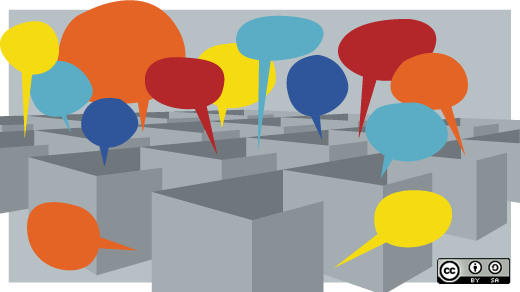Whether you’ve taken the time to notice or not, the concept of a traditional workday and work environment is changing — and rapidly.
No longer are workers content to sit behind cubicle walls from 9-to-5, tethered to their chairs or stations like a ball and chain. Sales jobs, online marketing jobs, website development jobs and a million and one others make it possible to be just as productive from the comforts of home or a wifi-enabled coffee shop as you would be in the office.
Tools like Google Documents and Dropbox make it possible to access your documents (and those of others) from anywhere you have access to the Internet, and makes collaboration and brainstorming a breeze.
The concept of “face time” with your boss is being replaced with the “as long as you’re getting your work done, you’re OK” mentality. Which brings me to the idea of a Results-Oriented Work Environment, better known as ROWE. For those not familiar, it’s a “management strategy where employees are evaluated on performance, not presence,” according to the official site, meaning it’s more about quality than quantity.
At my previous gig, we made the transition from the typical 9-to-5 to this type of working environment, and it wasn’t without its challenges. It’s an entire shift in your mindset, and really forces you to re-prioritize and be the most self-disciplined version of yourself.
A few things I learned along the way:
This type of environment requires buy-in from the leadership team — and also an extraordinary amount of trust. My manager at the time wanted our business to exude a certain level of “cool,” and thought this more laid-back approach would signal that. He also put faith in the idea that we would continue at the same level of productivity, and let him know if we were facing any unforeseen challenges as a result of this change. He trusted us, but checked in frequently to make sure we were staying on track.
The ROWE strategy resulted in happier employees. Employees who don’t have to commute a half hour to work in rush-hour traffic are happier employees. Employees who perhaps aren’t morning people and get to sneak in an extra hour of sleep are happier employees. Employees who can save money on lunch because they can eat it at home are happier employees. My fellow co-workers and I appreciated the flexibility that came with this schedule, allowing us to tend to things like doctors appointments and post office runs without feeling like we had to schedule them all during a half-hour lunch break. If we were gone longer than we anticipated, that was OK because we could simply make up the lost time later in the day.
Minimizing distractions is key. If you own a pet, if you have a washer and dryer, or if you have any type of responsibilities at home whatsoever, the ROWE way of working can turn even the most focused worker into a scattered blob of distractions. As I said before, it requires an entire shift in your mindset, because usually when you’re at home, your brain will allow itself to relax a bit from your long workday. Now, however, the home or the library or coffee shop is a place to put your nose to the grindstone and get stuff done. Keeping a routine by showering and actually getting dressed when you get up in the morning goes a long way in helping yourself get into the right frame of mind. (Coffee helps, too.)
Collaboration is still possible and simply requires you to use the tools at your disposal. Need to rant about something that didn’t go the way you’d plan? Call up your co-worker. Need to brainstorm ideas for your next blog post? Start a Google+ Hangout, and suddenly you’re face-to-face with your smiling work mates. Need a second set of eyes on your proposal? Email the Google Document to your boss and let him or her make edits in real time. You start to realize that all of the things that you thought would be trickier from 20 miles away are really quite effortless.
If you’re currently working from home or have in the past, I’d love to hear about your experience and whether you employed the principles of ROWE or another similar program. Were you successful? Why or why not?
This post is written by Erica Moss, the social media outreach coordinator for the online masters in nursing program at Georgetown University, which has one of the nation's leading midwifery programs. Outside of work, Erica is an avid dog lover who loves photography and meeting new people.







8 Comments